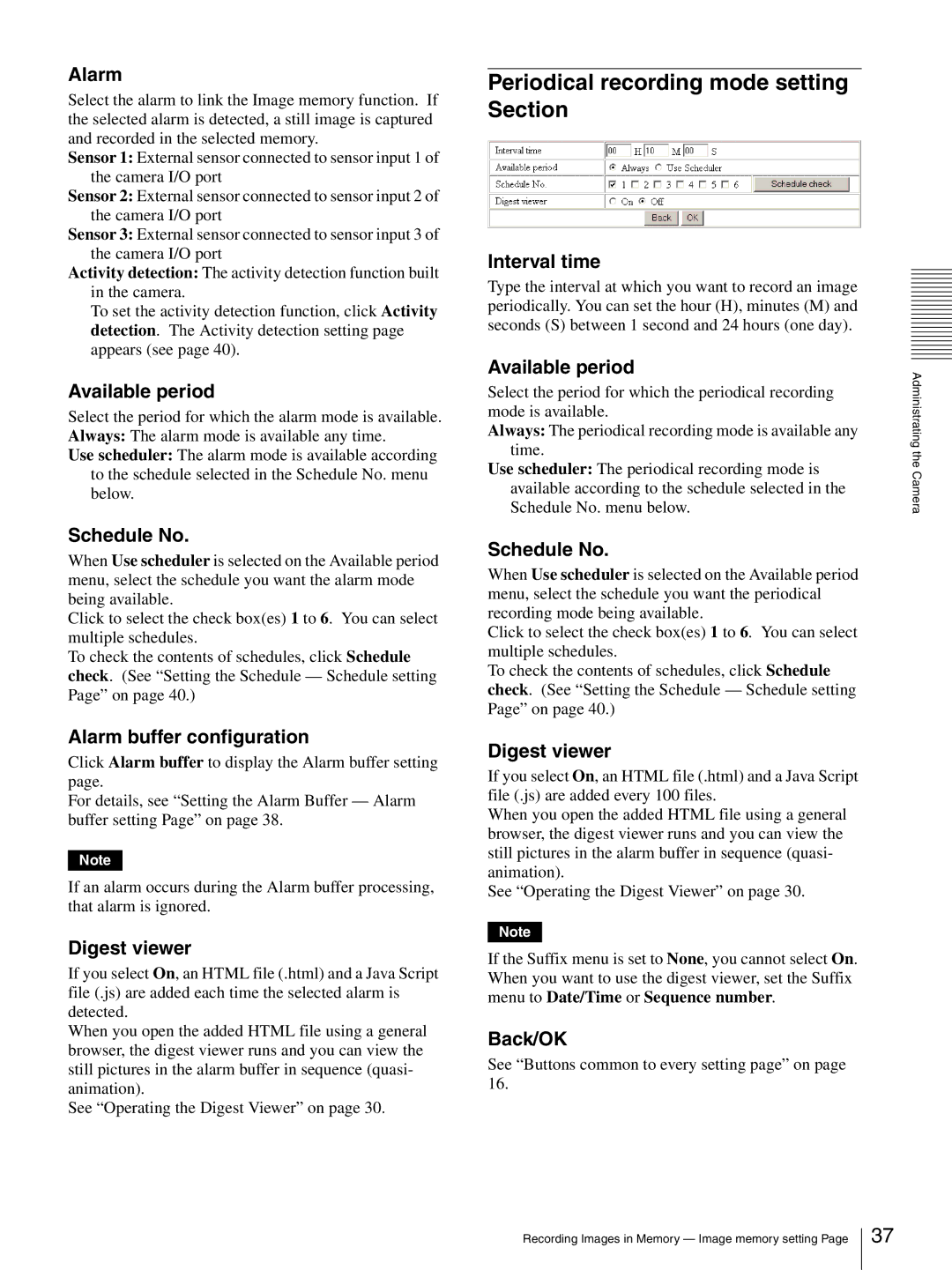
Alarm
Select the alarm to link the Image memory function. If the selected alarm is detected, a still image is captured and recorded in the selected memory.
Sensor 1: External sensor connected to sensor input 1 of the camera I/O port
Sensor 2: External sensor connected to sensor input 2 of the camera I/O port
Sensor 3: External sensor connected to sensor input 3 of the camera I/O port
Activity detection: The activity detection function built in the camera.
To set the activity detection function, click Activity detection. The Activity detection setting page appears (see page 40).
Available period
Select the period for which the alarm mode is available. Always: The alarm mode is available any time.
Use scheduler: The alarm mode is available according to the schedule selected in the Schedule No. menu below.
Schedule No.
When Use scheduler is selected on the Available period menu, select the schedule you want the alarm mode being available.
Click to select the check box(es) 1 to 6. You can select multiple schedules.
To check the contents of schedules, click Schedule check. (See “Setting the Schedule — Schedule setting Page” on page 40.)
Alarm buffer configuration
Click Alarm buffer to display the Alarm buffer setting page.
For details, see “Setting the Alarm Buffer — Alarm buffer setting Page” on page 38.
Note
If an alarm occurs during the Alarm buffer processing, that alarm is ignored.
Digest viewer
If you select On, an HTML file (.html) and a Java Script file (.js) are added each time the selected alarm is detected.
When you open the added HTML file using a general browser, the digest viewer runs and you can view the still pictures in the alarm buffer in sequence (quasi- animation).
See “Operating the Digest Viewer” on page 30.
Periodical recording mode setting Section
Interval time
Type the interval at which you want to record an image periodically. You can set the hour (H), minutes (M) and seconds (S) between 1 second and 24 hours (one day).
Available period
Select the period for which the periodical recording mode is available.
Always: The periodical recording mode is available any time.
Use scheduler: The periodical recording mode is available according to the schedule selected in the Schedule No. menu below.
Schedule No.
When Use scheduler is selected on the Available period menu, select the schedule you want the periodical recording mode being available.
Click to select the check box(es) 1 to 6. You can select multiple schedules.
To check the contents of schedules, click Schedule check. (See “Setting the Schedule — Schedule setting Page” on page 40.)
Digest viewer
If you select On, an HTML file (.html) and a Java Script file (.js) are added every 100 files.
When you open the added HTML file using a general browser, the digest viewer runs and you can view the still pictures in the alarm buffer in sequence (quasi- animation).
See “Operating the Digest Viewer” on page 30.
Note
If the Suffix menu is set to None, you cannot select On. When you want to use the digest viewer, set the Suffix menu to Date/Time or Sequence number.
Back/OK
See “Buttons common to every setting page” on page 16.
Administrating the Camera
Recording Images in Memory — Image memory setting Page
37
